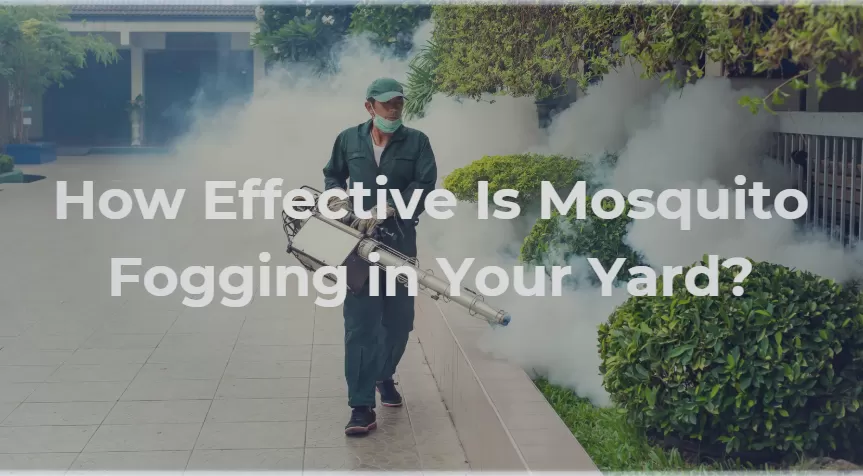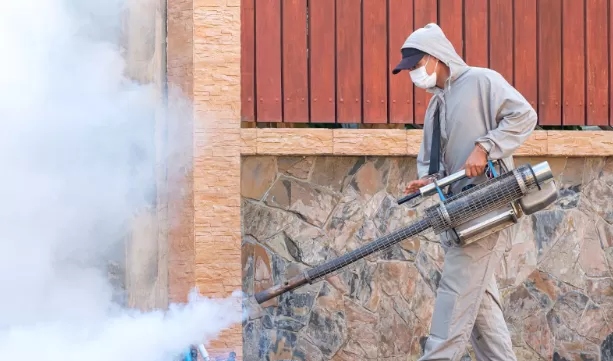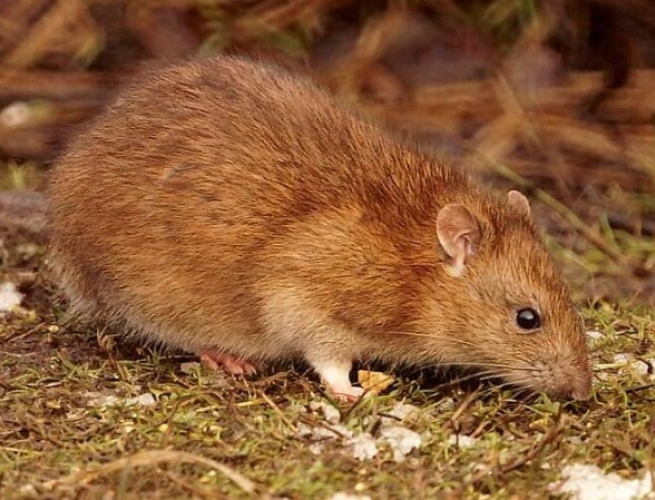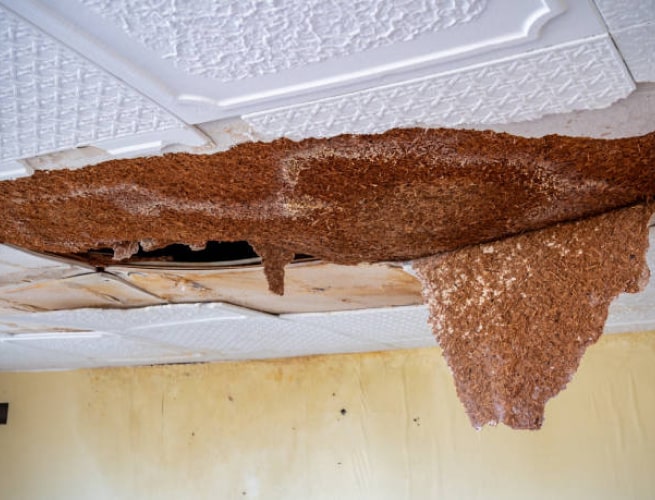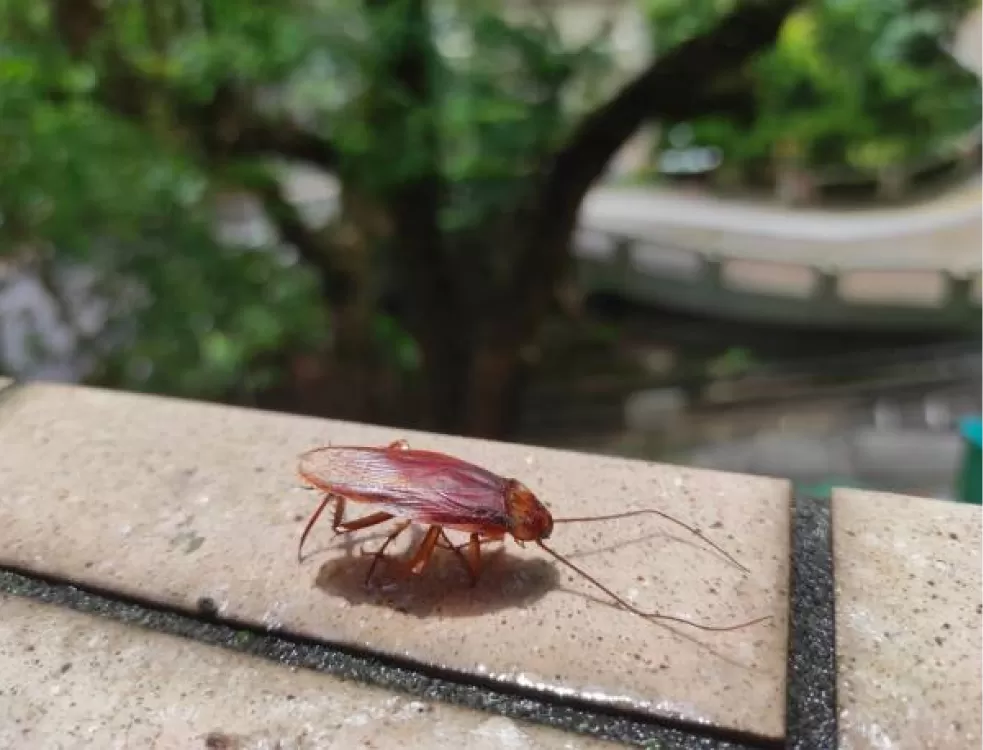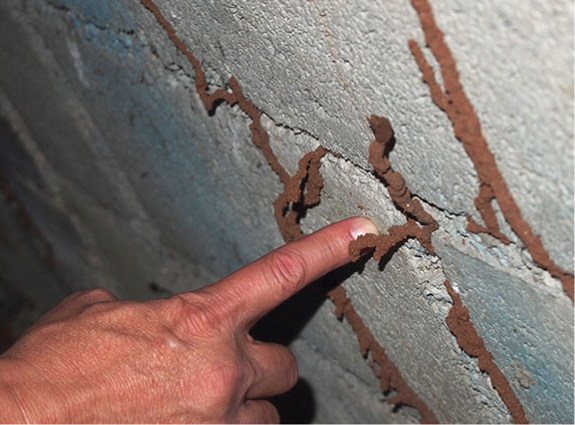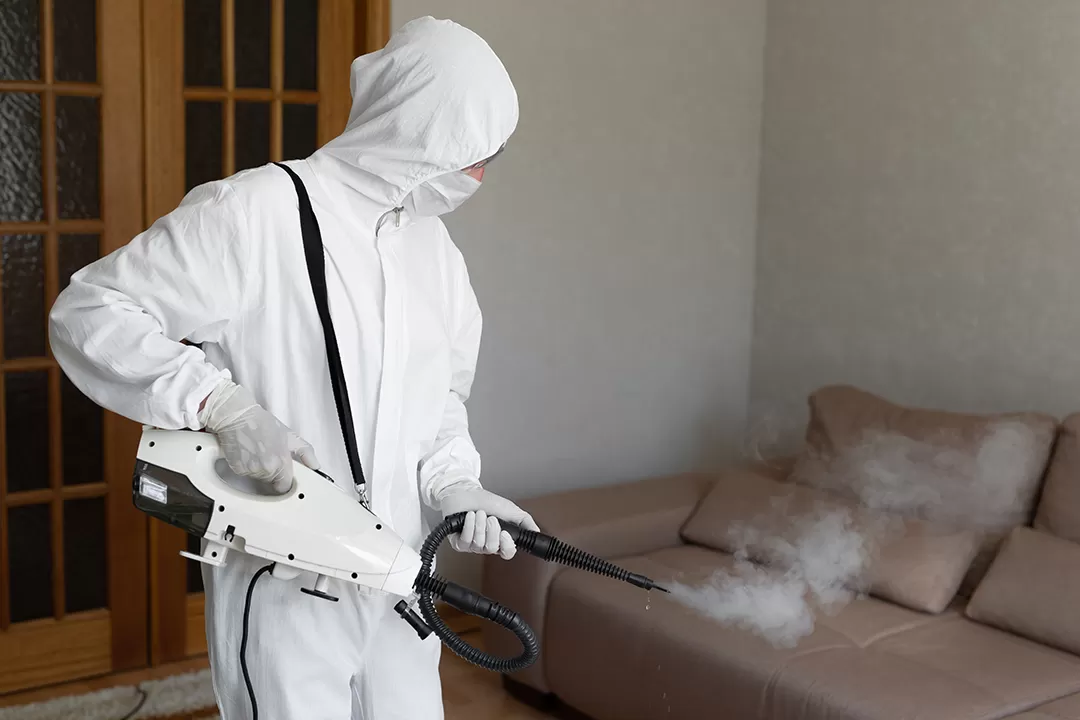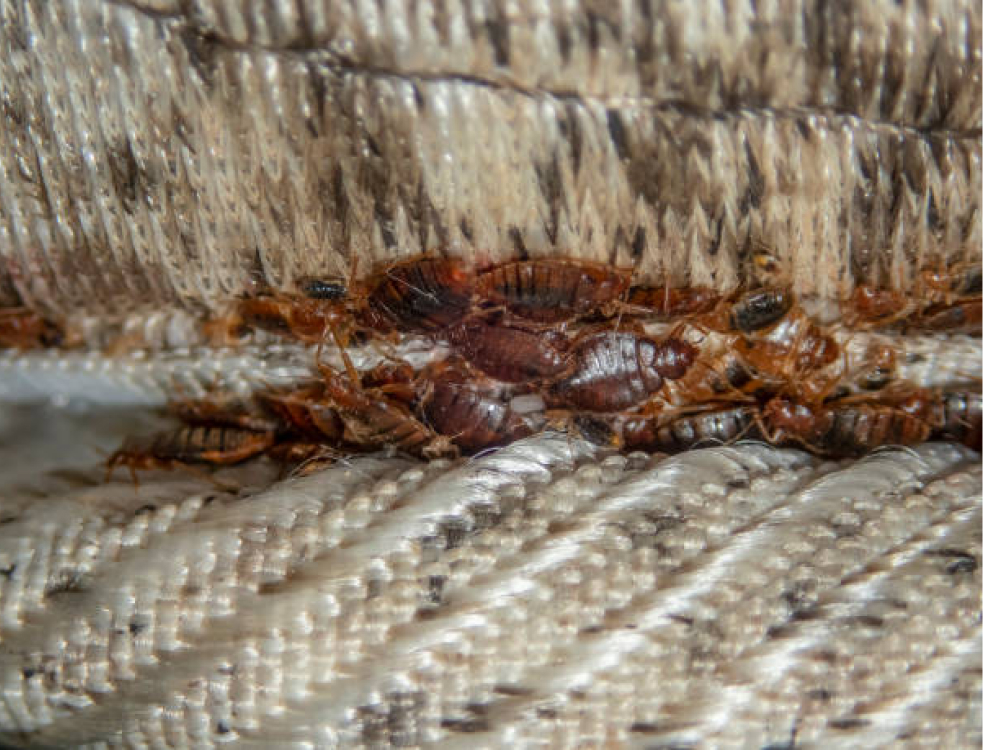As the warm weather encourages outdoor activities, mosquitoes frequently become unwelcome visitors in our backyards, creating a nuisance problem for many homeowners. For homeowners aiming to reclaim their outdoor spaces, understanding mosquito fogging and other mosquito control methods is essential. This article delves into mosquito fogging and mosquito management strategies, covering how it works, its effectiveness, safety concerns, and alternative methods. Additionally, we will explore the benefits of hiring a professional pest control company like Aardwolf PestKare. Prepare to learn about the most effective strategies for keeping your yard free of mosquitoes, including how to use mosquito repellents and combat mosquito breeding!
Key Takeaways:
- Mosquito fogging is an effective method for reducing mosquito populations in your yard.
- The effectiveness of mosquito fogging can be affected by factors like weather conditions and proper preparation.
- Hiring a professional pest control company, like AardwolfPestKare, can ensure safe and successful mosquito control.
What Is Mosquito Fogging and How Does It Work?
Mosquito fogging is a commonly employed pest control method aimed at reducing the mosquito population, particularly targeting species such as the Aedes mosquito, which is notorious for transmitting diseases like dengue fever.
This technique involves the dispersal of pesticides into the air using foggers, allowing the chemicals to be absorbed by both adult mosquitoes and their larvae. This process disrupts their nervous systems, ultimately leading to their elimination.
In Singapore, where mosquito infestations can present significant health risks, mosquito fogging is regarded as an effective strategy for managing these pests and fostering a safer living environment by reducing mosquito populations and controlling mosquito larvae.
Effectiveness of Mosquito Fogging in Reducing Mosquito Population
The effectiveness of mosquito fogging in reducing the mosquito population is well-documented, especially in urban environments such as Singapore, where conditions are particularly conducive to mosquito breeding and infestation. Research indicates that when mosquito fogging is implemented properly, it can lead to a significant reduction in adult mosquito numbers and disrupt their breeding cycle. This, in turn, allows for effective control of the pest population and helps minimize the risks associated with diseases such as dengue fever.
Indeed, various research initiatives have highlighted the critical role that this mosquito control method can play in alleviating health hazards tied to these pests. For example, a study conducted by the National Environment Agency (NEA) found that when fogging is combined with other mosquito control strategies, it can achieve a remarkable 90% reduction in adult mosquito populations. Additionally, another research effort demonstrated that professional mosquito control services employing fogging in high-risk areas resulted in a significant decrease in cases of mosquito-borne diseases by up to 60% within just a few weeks.
These findings emphasize the necessity of coordinated mosquito control efforts in urban settings, where timely intervention is often essential to safeguard public health.
Factors That Affect the Effectiveness of Mosquito Fogging
The effectiveness of mosquito fogging can be influenced by a range of factors, including environmental conditions, the timing of the fogging, and the specific insecticides utilized. For example, areas with standing water, such as clogged gutters and stagnant pools, often serve as breeding grounds for mosquitoes, which can complicate control efforts. Additionally, the presence of active mosquitoes during the fogging process is critical to ensure that the insecticide effectively targets and eliminates adult mosquitoes.
Effective mosquito control involves more than just fogging or misting; it requires a comprehensive strategy that considers several key elements, like mosquito species and breeding grounds:
- Weather Conditions: Windy days can disperse insecticides away from their intended targets, while rainy weather may wash them away entirely.
- Time of Day: Mosquitoes tend to be more active during dusk and dawn, making these times particularly suitable for fogging.
- Breeding Sites: Identifying and eliminating sources of standing water is essential, as these sites can rapidly facilitate mosquito reproduction.
Ultimately, adopting an integrated approach to mosquito control that takes these factors into account is crucial for achieving lasting results in reducing mosquito populations and mitigating mosquito nuisance problems.
Safety Concerns and Risks of Mosquito Fogging
While mosquito fogging is indeed an effective method for pest control, it is crucial to address the safety concerns and potential risks associated with the use of pesticides and insecticides in residential areas. The chemicals employed in fogging can pose health risks to both humans and pets if not applied correctly, prompting important discussions about their environmental impact and the need for environmentally friendly alternatives. It is imperative that proper precautions are taken to ensure the safety of individuals during and after the fogging process.
Residents should be made aware of the specific pesticides being utilized as well as any associated health risks. By following certain safety measures, potential exposure can be significantly minimized. For instance, it is advisable to stay indoors during the fogging process and for a few hours afterward. Additionally, keeping windows and doors closed, along with covering outdoor furniture, can help avoid contamination. Ensuring that pets are indoors and away from treated areas is also essential.
It is vital to seek out insecticides that are certified as safe for human health and to consider alternative pest control methods, such as natural mosquito repellents or biological control. These alternatives focus on maintaining ecological balance without compromising safety.
By raising awareness and prioritizing safety, communities can effectively manage mosquito populations while safeguarding the health of their residents.
Alternatives to Mosquito Fogging
While mosquito fogging is a commonly used method for controlling mosquito populations, homeowners have several alternatives at their disposal to effectively reduce these pests and prevent infestations. Options such as natural mosquito repellents, the use of mosquito nets, and proactive measures to eliminate standing water in yards can significantly enhance mosquito management and help get rid of mosquitoes.
Considering these alternatives can lead to a more comprehensive approach to pest control and reduce mosquito breeding effectively. For instance, natural mosquito repellents like citronella oil and eucalyptus not only help deter mosquitoes but also offer added benefits, such as being environmentally friendly. Additionally, mosquito nets create a physical barrier that allows for more enjoyable outdoor activities without the annoyance of bites.
Furthermore, regularly inspecting and removing sources of standing water—such as clogged gutters, pet dishes, and other water sources—can greatly diminish potential mosquito breeding sites around your home.
By integrating these methods, homeowners can complement traditional fogging techniques with sustainable alternatives that promote a healthier environment while effectively keeping mosquitoes at bay.
Benefits of Hiring a Professional Pest Control Company for Mosquito Control
Engaging a professional pest control company for mosquito management can provide several advantages that greatly improve the effectiveness of controlling mosquito populations. Experts in the field, like those at Aardwolf PestKare, utilize a variety of strategies and advanced techniques to tackle mosquito infestations.
Their approach to mosquito control is comprehensive and extends well beyond basic fogging methods, incorporating mosquito misting and fumigation techniques. With their extensive experience and expertise, these professionals can create customized mosquito management plans that effectively reduce existing populations and help prevent future infestations.
How AardwolfPestKare Can Help with Mosquito Control
AardwolfPestKare provides a comprehensive mosquito control service tailored to meet the specific challenges posed by mosquito populations in Singapore. Their focus is on effective methods, including a mosquito fogging service, mosquito control service, and various preventive measures. The team is committed to offering clients the best solutions to address mosquito issues and improve their quality of life.
AardwolfPestKare’s expertise extends beyond mere temporary fixes; they implement long-term strategies to keep your environment mosquito-free and effectively control mosquito populations. Their team conducts thorough inspections to identify breeding sites and applies targeted treatments.
Some of the key services they offer include:
- Regular follow-up services
- Customized treatment plans
- Educational resources for clients
Many clients have shared success stories highlighting how AardwolfPestKare’s service has transformed their outdoor spaces. One client expressed their delight in being able to host barbecues without the worry of mosquito bites.
With a strong commitment to excellent customer service, AardwolfPestKare not only addresses pest issues effectively but also empowers clients with the knowledge needed to maintain a pest-free environment and combat mosquito infestations.
Customer Reviews and Testimonials
Many satisfied customers have praised AardwolfPestKare’s effective mosquito control solutions, highlighting their professionalism and ability to reduce mosquito populations significantly.
Customer reviews and testimonials are essential for assessing the effectiveness and quality of the mosquito control services offered by AardwolfPestKare. Many clients have expressed their appreciation for the company’s professional approach and the successful outcomes of the mosquito management strategies, noting a significant reduction in mosquito populations, which helps to reduce mosquito bites and the mosquito nuisance problem, and an enhanced outdoor experience.
Clients often share numerous positive remarks about how these services have transformed their backyards into safe havens for family gatherings and social events. For example, one customer mentioned that since starting the mosquito control services, outdoor barbecues have become more enjoyable than ever, allowing their children to play freely without the irritation of buzzing pests like the Aedes mosquito. Many reviews also highlight the personalized attention provided by the company, with tailored solutions that address specific yard concerns, including mosquito breeding grounds.
- “AardwolfPestKare made a remarkable difference in our yard! It’s like we’ve entered a mosquito-free zone.”
- “I can finally enjoy my evenings outside after their treatment; it has been life-changing!”
- “Their team was professional, arrived on time, and truly understood our needs.”
Such feedback underscores the company’s commitment to delivering quality service and effective mosquito control, ultimately allowing clients to fully enjoy their outdoor spaces once again by combating mosquito infestation.
Frequently Asked Questions about Mosquito Fogging
Frequently asked questions about mosquito fogging often center on its effectiveness, safety concerns, and best practices for implementation, especially considering the chemicals used in the process.
Homeowners looking to gain a deeper understanding of this mosquito control method can find valuable insights and answers that address their inquiries. It is important to consider how mosquito fogging operates, the necessary preparations, and the potential impact it may have on local wildlife and ecosystem health. Using fogging or misting techniques can drastically reduce mosquito populations while potentially affecting the environment.
- How effective is mosquito fogging? Many studies suggest that fogging can significantly reduce mosquito populations, especially in targeted areas.
- Is mosquito fogging safe for pets and humans? Generally, it is safe when applied according to established guidelines. However, it is advisable to keep pets indoors during treatment as a precaution.
- What is the best time for fogging? Typically, early morning or late evening is optimal, as these are the times when mosquitoes are most active.
- How can residents prepare for mosquito fogging? Clearing outdoor furniture and ensuring that windows are closed can enhance both effectiveness and safety.
By exploring these questions, homeowners can make an informed decision about whether this method aligns with their mosquito control strategy and effectively reduces mosquito breeding.
Conclusion: Is Mosquito Fogging Worth It for Your Yard?
The decision to employ mosquito fogging as a method for controlling mosquitoes in your yard should be grounded in a careful evaluation of its effectiveness, costs, and the benefits it offers in managing mosquito populations and reducing health risks. It is important for homeowners to understand the role of professional pest control services, such as Aardwolf PestKare, in making informed choices about the best approach to tackle mosquito issues, including the use of insecticide to kill adult mosquitoes.
The effectiveness of mosquito fogging can vary significantly based on the specific environment and timing, making it crucial to consider these factors before moving forward. While this method may lead to a substantial reduction in mosquito populations in the short term, it is essential to take into account the following considerations:
- Environmental impact, especially on non-target species
- Possible side effects on beneficial insects, such as butterflies and bees
- Frequency of treatments required to maintain effective mosquito control
Homeowners should carefully assess the costs associated with regular fogging against the potential long-term benefits to ensure they derive value from their investment. In the end, when contemplating pest control services, it is vital to consult with professionals and understand your unique circumstances to select the most appropriate mosquito management strategy.
What Are the Different Types of Mosquito Fogging Methods?
There are various types of mosquito fogging methods employed in mosquito control, each with its own unique benefits and applications. These methods include thermal fogging and ultra-low volume (ULV) spraying, offering options suitable for both residential and industrial mosquito management. The use of synthetic chemicals helps to reduce mosquito populations effectively.
Understanding the nuances of these different fogging techniques can significantly enhance the effectiveness of mosquito control efforts. For instance, thermal fogging utilizes heat to vaporize the insecticide, producing a fine mist that can effectively penetrate dense foliage. This makes it particularly suitable for larger outdoor areas, such as parks or recreational spaces. Additionally, these methods are used extensively in Singapore for mosquito control services.
On the other hand, ULV spraying disperses chemical particles without the need for high heat, making it an excellent choice for areas that require precise application, like gardens or regions near water sources. Additionally, methods such as backpack foggers allow for targeted treatment of localized outbreaks, ensuring more controlled usage. It is essential to select the appropriate method based on specific scenarios to maximize protection against these troublesome insects. The approach to mosquito control must also consider the presence of mosquito breeding grounds and stagnant water.
- Thermal Fogging: Best suited for large areas and dense vegetation.
- ULV Spraying: Ideal for precise application near sensitive environments.
- Backpack Foggers: Perfect for localized, targeted treatments.
How Often Should Mosquito Fogging Be Done for Optimal Results?
Determining the appropriate frequency for mosquito fogging is essential for achieving optimal results in mosquito control. Several factors, such as the local mosquito population, environmental conditions, and the presence of breeding grounds, can influence the recommended schedule for fogging services. This is critical for reducing the transmission of mosquito-borne diseases such as dengue fever.
Effective mosquito management involves more than simply deciding how often fogging should take place; it also requires an understanding of the various elements that can impact mosquito activity. For instance, weather patterns, including rainfall and temperature, significantly affect mosquito breeding. Warm and wet conditions often result in increased mosquito populations, which may necessitate more frequent interventions. Additionally, the presence of standing water in the area can create substantial breeding sites, making regular monitoring crucial to prevent mosquito infestations.
Experts recommend the following guidelines to optimize fogging frequency:
- Monitor and assess mosquito populations through trapping methods to identify active mosquitoes.
- Conduct fogging after heavy rains when breeding is likely to surge, especially in areas with standing water.
- Evaluate areas with a history of mosquito infestations for targeted treatment, considering the use of mosquito foggers.
By adhering to these recommendations, communities can enhance their mosquito control efforts and mitigate the risks associated with mosquito-borne diseases.
How Can a Homeowner Prepare for Mosquito Fogging?
Preparing for mosquito fogging is an essential task for homeowners looking to maximize the effectiveness of the service and ensure the safety of their families and pets. Important steps to consider include clearing outdoor areas, covering water sources, and adhering to any specific instructions provided by pest control professionals, such as those from a professional mosquito control service.
Homeowners should carefully remove items such as toys, furniture, and plant pots from their yards, thereby creating a clear path for the fogging treatment to effectively reach all necessary areas.
- It is important to ensure that windows and doors are tightly sealed to prevent any chemicals from entering indoor spaces.
- Additionally, consider trimming back overgrown shrubs and grass to minimize potential mosquito hiding spots.
- Informing neighbors about the scheduled fogging is also crucial, as it promotes a community approach to effective mosquito management.
By undertaking these preparations, individuals can significantly enhance the results of the treatment, greatly reducing mosquito populations and improving outdoor comfort for everyone involved.
What Are the Long-Term Effects of Mosquito Fogging on the Environment?
When considering mosquito fogging as a method of control, it is essential to evaluate the potential long-term effects on the environment. The use of insecticides raises valid concerns regarding their impact on non-target species and the overall ecosystem, making a careful assessment of sustainable practices in mosquito management necessary. This includes understanding how insecticides work by disrupting the nervous system of mosquitoes and all other insects.
Specifically, the application of chemical insecticides is designed to target mosquitoes, but it can also inadvertently harm beneficial insects such as bees, butterflies, and other pollinators. These creatures play a crucial role in maintaining biodiversity and facilitating plant reproduction, and their decline poses a significant threat to ecosystem stability. The chemicals used in fogging can have a long-lasting impact on these beneficial insects.
Moreover, excessive reliance on fogging can lead to the development of pesticide-resistant mosquito populations, thereby exacerbating the very problem it intends to address. Therefore, adopting integrated pest management strategies that emphasize prevention and biological control methods is a more balanced approach. This involves using a pesticide only as a part of a comprehensive mosquito management strategy.
Some effective strategies include:
- Utilizing natural predators like dragonflies and bats.
- Implementing habitat modification to eliminate standing water, which serves as breeding grounds for mosquitoes.
- Promoting public awareness about the ecological impacts of chemical use.
By focusing on these strategies, it is possible to mitigate the adverse effects of mosquito control measures while also protecting the environment.
What Are Some Tips for Preventing Mosquito Infestations in Your Yard and Combatting Mosquito Problems?
Preventing mosquito infestations in your yard requires a proactive approach that focuses on addressing mosquito breeding grounds and minimizing their habitats. Simple practices, such as eliminating standing water, maintaining clean roof gutters, and carefully managing your landscaping, can significantly contribute to effective mosquito control and reduce mosquito nuisance problems.
To truly protect your outdoor space, homeowners should explore a variety of methods aimed at reducing mosquito populations and combatting mosquito nuisance problems. It is essential to regularly inspect your property for areas where stagnant water can accumulate, including old tires, bird baths, and clogged drains.
Here are some practical tips to consider:
- Regularly Empty Standing Water: Make it a habit to check empty places that can collect water on a weekly basis to prevent mosquito breeding.
- Clean Gutters: Ensure that your roof gutters are free from debris to prevent water buildup and reduce mosquito breeding.
- Landscaping Wisely: Trim back overgrown vegetation and keep your grass short to reduce shaded areas where mosquitoes tend to thrive.
- Add Natural Predators: Consider encouraging bats and birds by installing houses or feeders, which can help control the mosquito population and reduce mosquito nuisance problems.
By implementing these strategies, you can create a less hospitable environment for these pests using environmentally friendly methods, ultimately leading to a healthier and more enjoyable outdoor experience.
Frequently Asked Questions
What is mosquito fogging and how does it work?
Mosquito fogging is a method of pest control where a fog or mist containing insecticides is sprayed in an area to kill mosquitoes and all other insects. The fog spreads through the air and settles on surfaces where mosquitoes rest, effectively eliminating them by disrupting the nervous system.
How effective is mosquito fogging in controlling mosquito populations in my yard?
Mosquito fogging is a highly effective method of controlling mosquitoes in your yard. The insecticides used in fogging are specifically targeted at mosquitoes, making it a more efficient solution compared to generic insect sprays.
Is it safe to use mosquito fogging in my yard?
Yes, it is safe to use mosquito fogging in your yard. The insecticides used in fogging are approved by regulatory authorities, including the National Environment Agency (NEA), and are not harmful to humans or pets when used according to instructions. However, it is recommended to keep pets and children indoors during the fogging process to ensure safety.
How often should I schedule mosquito fogging for my yard?
The frequency of mosquito fogging in your yard depends on various factors such as the severity of the mosquito infestation and the type of fogging solution used. Generally, it is recommended to fog your yard once every 2-3 weeks for optimal effectiveness.
Can I do mosquito fogging myself or do I need to hire a professional?
While there are DIY fogging solutions available, it is highly recommended to hire a professional for mosquito fogging in your yard. They have the expertise and equipment to ensure proper and safe fogging, minimizing any potential risks.
Are there any precautions I need to take before and after mosquito fogging for my yard?
Yes, there are some precautions you should take before and after mosquito fogging. Before fogging, make sure to cover or remove any outdoor furniture, toys, and pet food bowls. After fogging, it is recommended to wait at least 30 minutes before re-entering the treated area and to wash any exposed fruits and vegetables before consuming.

